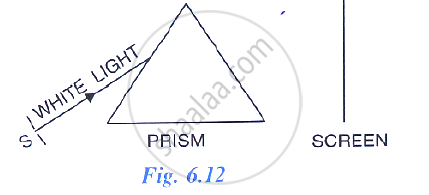Advertisements
Advertisements
प्रश्न
Name three factors on which the deviation produced by a prism depends and state how does it depend on the factors stated by you.
उत्तर
The following four factors affect the deviation the prism produces:
- The angle of incidence: As the angle of incidence increases, first the angle of deviation decreases and reaches a minimum value for a certain angle of incidence. By further increasing the angle of incidence, the angle of deviation is found to increase.
- The material of the prism (i.e., refractive index): for a given angle of incidence, the prism with a higher refractive index produces a greater deviation than the prism with a lower refractive index.
- Angle of prism: The angle of deviation increases with the increase in the angle of the prism.
- The colour or wavelength of light used increases the angle of deviation with a decrease in the wavelength of light.
APPEARS IN
संबंधित प्रश्न
How does the deviation produced by a triangular prism depend on the colours (or wavelengths) of light incident on it?
Which colour of white light travels fastest in glass?
In following figure shows a thin beam of white light from a source S striking on one face of a prism.

Complete the diagram to show effect of prism on the beam and to show what is seen on the screen.
In following diagram shows a thin beam of white light from a source S striking on one face of a prism.

What conclusion do you draw from the observation in part (b) above?
If a monochromatic beam of light undergoes minimum deviation through an equiangular prism, how does the beam pass through the prism, with respect to its base?
What is understood by the term dispersion of light? What is its cause?
A prism causes dispersion of white light while a rectangular glass block does not. Explain.
Which colour of white light travels slowest, in glass?
Write the approximate wavelength for red light.
